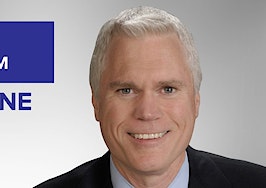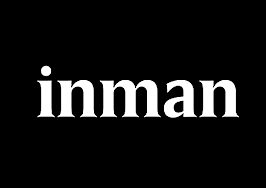- Assistance programs may offer grants, funds for closing costs, a second loan, a low-interest mortgage with no PMI or a tax credit.
- Funding comes from federal sources, bond-funded programs, state-sponsored housing and TBA (to-be-announced) and capital markets funding.
- Without clear guidance, some lenders may decide to pull back on using these programs for fear of an audit.
- Explore local options and talk to lenders to fully understand the loans they originate.
In a market where first-time homebuyers consistently cite the down payment as their no. 1 challenge, there’s a battle brewing behind the scenes — a fight to preserve the wide range of down payment programs that propel scores of new buyers into homeownership.
More real estate professionals are trying to reach first-time homebuyers — it’s the future of the market, after all. Many of these buyers may qualify for down payment help, helping boost their buying power and getting them into a home sooner.
Even if you already use homeownership programs, you probably find yourself asking: Where does the money come from? How do the programs work? Can my clients benefit?
For homebuyers, and many real estate professionals, those answers can be a bit of a mystery. And, unfortunately, politics further muddy the issue, potentially locking out buyers from these healthy, successful programs.
Who provides homeownership programs?
Homeownership programs (roughly 2,400 available across the country) are designed and administered by state and local Housing Finance Agencies (HFAs), cities and municipalities, nonprofit organizations and employers.
They may offer a down payment grant (gift), funds for closings costs, a second loan for the down payment that’s forgiven over a set number of years or that defers payments, a first mortgage with a low interest rate and no PMI, or even a tax credit.
Why do these programs exist?
These organizations design programs based on their communities’ unique needs — for example:
- An area of town needs revitalization and the city wants owner-occupant buyers to move in and renovate homes.
- An employer seeks to attract and retain quality employees to their area.
- A high-cost market needs to ensure community heroes, like police officers and teachers, can afford to live there.
- Median-income buyers need access to affordable lending options.
- Perhaps most importantly, without the first-time homebuyers these programs help serve, the housing market stalls.
How are down payment assistance programs funded?
The funding for down payment assistance (DPA) can come from numerous sources. There are federal sources, bond-funded programs, state-sponsored housing funds that are perpetually funded and TBA (to-be-announced) and capital markets funding.
It’s important to note that none of these current funding structures resemble the seller-paid programs that were eliminated years ago during the housing crisis.
Loans originated through HFA DPA programs conform to strict underwriting criteria and are fully-amortized, fixed-rate 30-year mortgages with:
- A maximum allowable debt-to-income (DTI) ratio of 45 percent (as allowed by FHA)
- Minimum allowable borrower FICO scores of 640
- No prepayment penalties or negative amortization
- Limitations on points and fees charged to the borrower
Why are these programs being challenged?
Last year, the U.S. Department of Housing and Urban Development (HUD) Office of Inspector General (OIG) investigated and audited the activities of two lenders participating in HFA down payment assistance programs.
In two separate audits, the HUD OIG found two mortgage lenders to be in violation of HUD/FHA regulations in that the program was derived from a “premium priced” mortgage. They said the borrowers were effectively “repaying” the DPA gift-grant through an above-market rate mortgage.
HFA-funded DPA programs have been in place for approximately 20 years and fund approximately $10 billion in mortgage loans per year. The OIG has the power to audit lenders, but only HUD has the power to bring sanctions.
There’s a power struggle between HUD’s Inspector General and HUD over how certain down payment assistance programs are funded and then disclosed to consumers.
[Tweet “There’s a power struggle between HUD’s IG and HUD over down payment assistance programs”]
Now, without clear guidance, some lenders may decide to pull back on using these programs for fear of an audit (even though they are following current HUD guidelines). In fact, this is already happening due to lack of clarity.
HUD’s IG is mixing apples and oranges in its interpretation of how the down payment assistance programs in question are funded. The comparison to the seller-funded programs of yesterday is also faulty.
Seller-paid down payment programs required nothing from the seller and the funding came from artificially inflated appraised values, resulting in the buyer taking on thousands more in amortized 30-year debt unsecured by real value in the home. Plus, all of the fees to participate in seller-paid programs were passed on to the buyer.
HUD’s IG has politicized this disagreement by enlisting The House Financial Services Committee and particularly its chairman, Jeb Hensarling, who is further distorting the situation to suit his anti-down payment assistance political narrative.
Safe lending
Let’s take a step back and consider that a premium financing structure is used elsewhere and without concern that it is a risk to a borrower.
For example, FHA has increased both upfront mortgage insurance (MI) and monthly MI premiums over the last 10 years, and lenders still finance mortgage insurance with rate premiums.
With premium-priced DPAs, the borrower pays a slightly higher rate (that they still qualify for under stringent DTI requirements) in exchange for extra funds and the opportunity to own a home.
That’s basic, safe lending in any industry — money costs money. Premiums on these DPAs equate to a fraction of a point in many cases, perhaps a whole point at most. And interest rates are still historically, massively low.
Furthermore, premium-pricing DPAs is still an outlier case, certainly not representative of all, or even many, DPAs. Plus, homebuyers generally have to complete homebuyer education, which time and again proves to properly prepare and train buyers for homeownership, reduce default rates, and create successful, lasting ownership among new buyers.
What can you do?
First, let’s not lump all homebuyer programs into the same category. Nationwide, a vast and diverse array of homeownership programs are available to buyers that fuel ownership among first-timers and low-to-moderate income buyers who would have otherwise been forced to wait many years to purchase a home.
Explore your local options, and talk to lenders who offer them to fully understand the quality of the loans they originate and the breadth of opportunity they provide.
Second, voice your support with those who can help preserve our wide range of down payment programs. Elimination of the HFA DPA programs would have a chilling impact on affordable homeownership efforts across the nation, and perhaps on your own business. Thousands of families each year that rely on HFA DPA programs to facilitate their home purchase would be forced into a higher-cost and less sustainable form of housing finance or an even worse rental agreement.
- Contact your U.S. Senator and Representatives and let them know lenders need clarity on this issue.
- Urge your Senator or Representative to contact leaders of either the House Financial Services Committee or Senate Banking Committee to voice their support for HFA-funded DPA programs.
- Share with those you know care about this issue and encourage them to do the same.
- As real estate professional, get involved with your state and local Housing Finance Agencies not just to fuel your business, but for the health of your industry as a whole.
Have a clear conversation with your clients, and make sure they truly understand how down payments work.
Rob Chrane is a former Realtor and broker with more than three decades of experience in real estate and mortgage finance. He is the president of Down Payment Resource.







